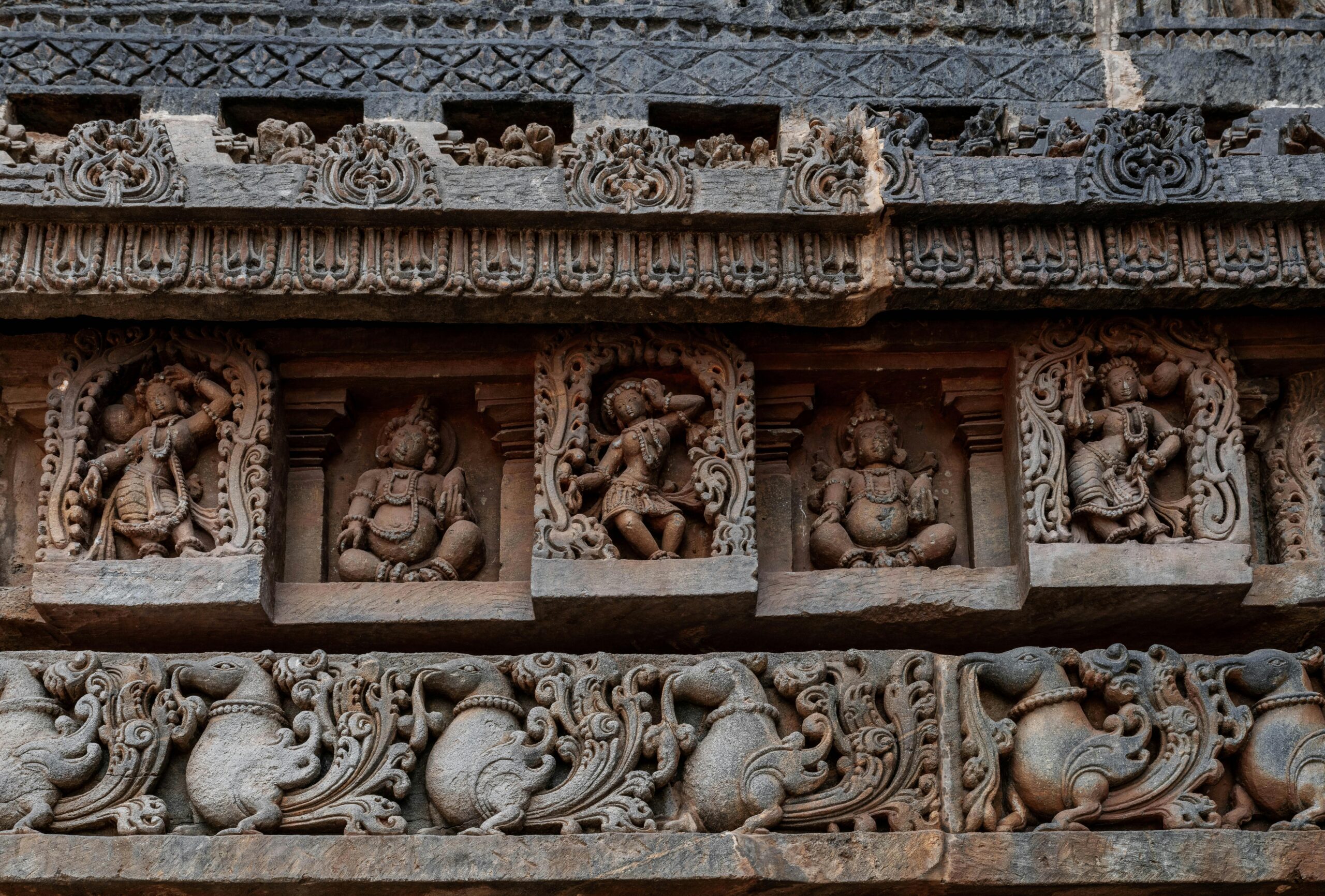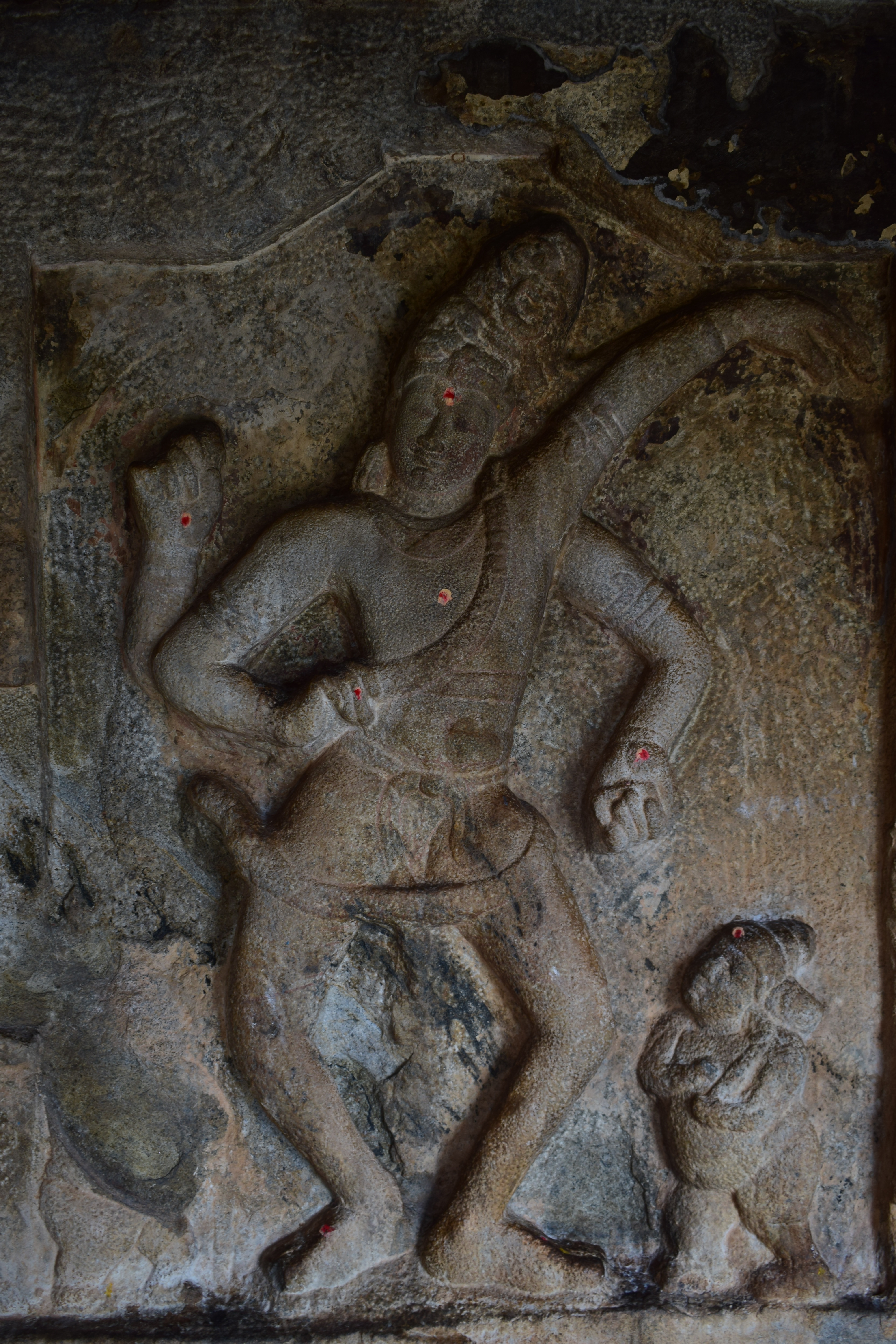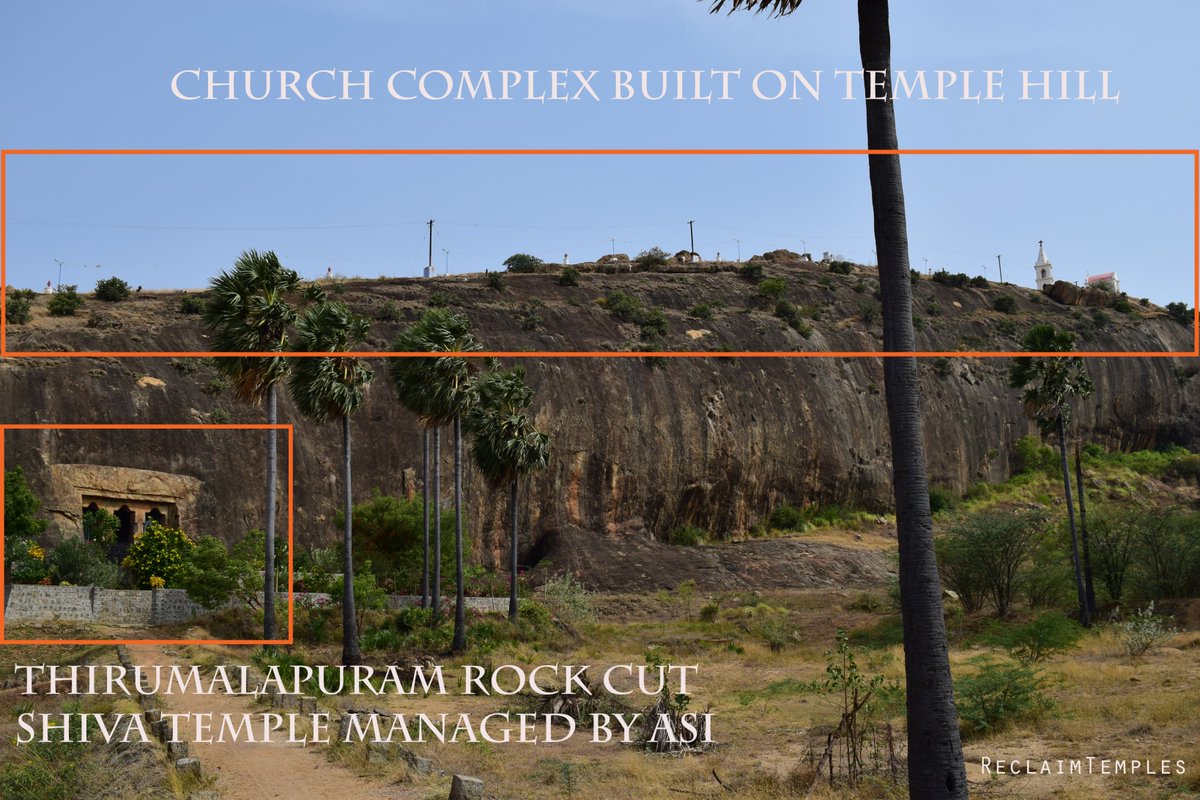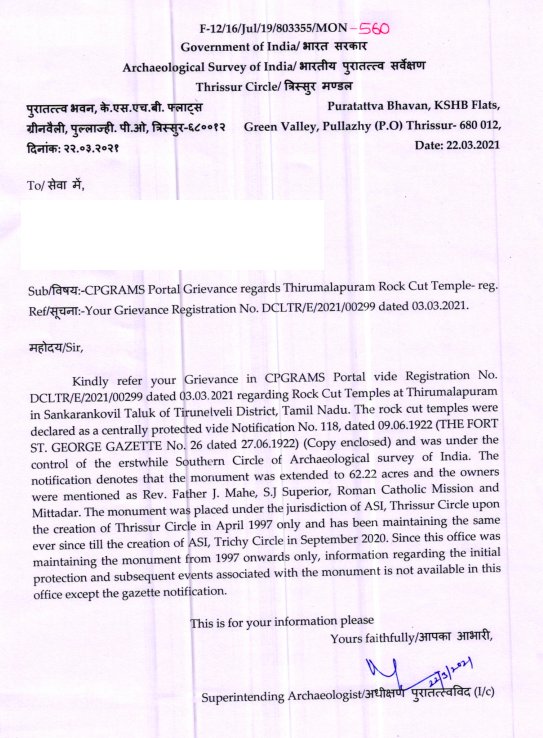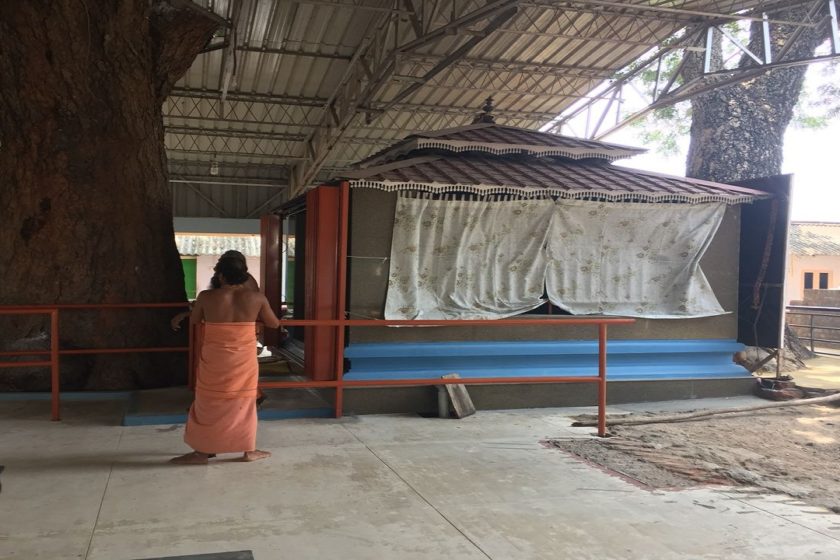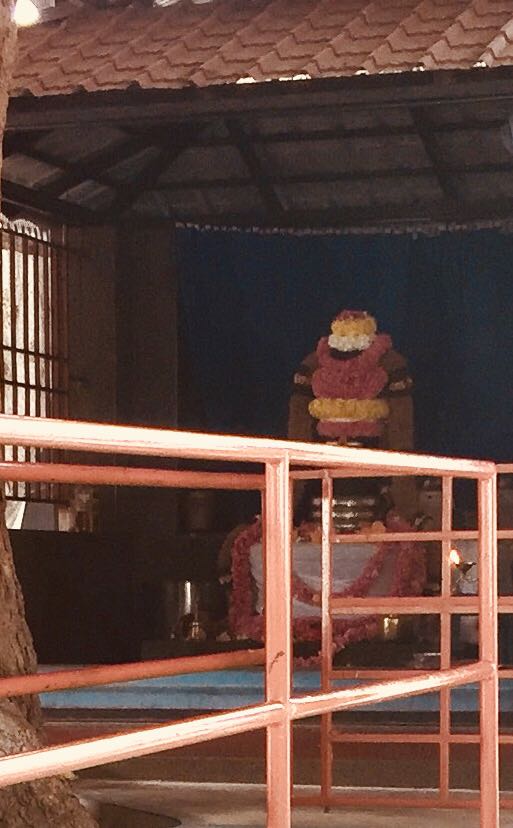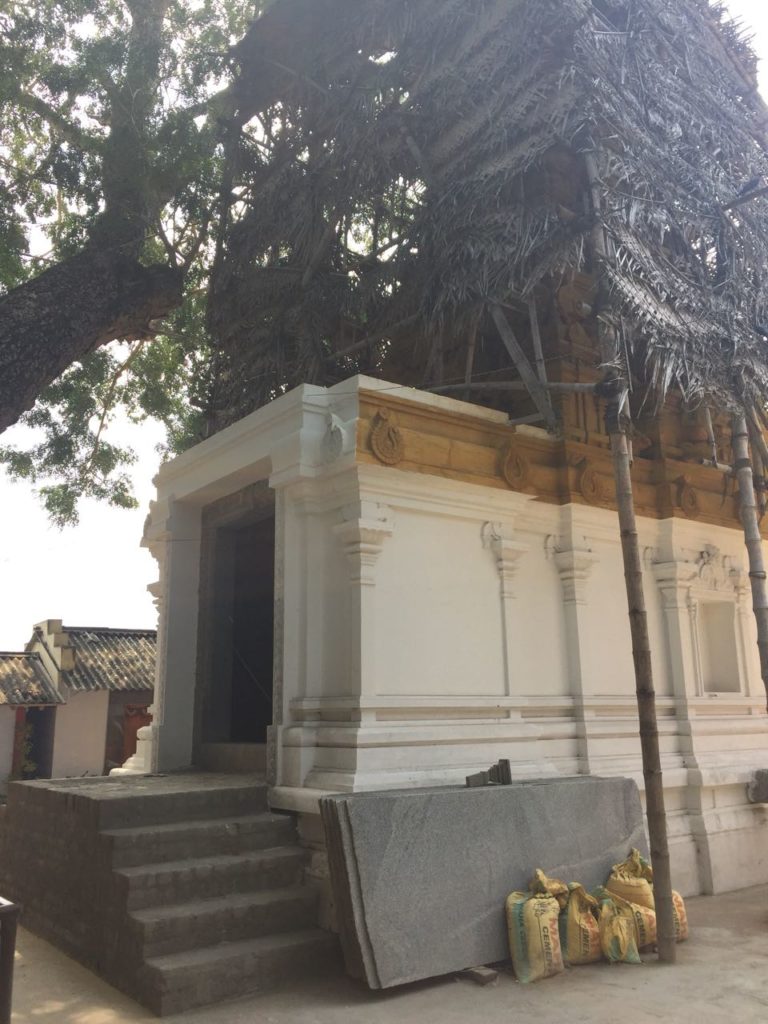Tamil Nadu
List of Masjids in Tamil Nadu which was built by destroying Hindu temples
LIST OF MOSQUES IN TAMIL NADU WHICH WERE BUILT AFTER DEMOLISHING THE HINDU TEMPLES
We give below, state-wise and district-wise, the particulars of Muslim monuments which stand on the sites and/or have been built with the materials of Hindu temples, and which we wish to recall as witnesses to the role of Islam as a religion and the character of Muslim rule in medieval India. The list is the result of a preliminary survey. Many more Muslim monuments await examination. Local traditions which have so far been ignored or neglected have to be tapped on a large scale.
We have tried our best to be exact in respect of locations, names and dates of the monuments mentioned. Even so, some mistakes and confusions may have remained. It is not unoften that different sources provide different dates and names for the same monument. Many Muslim saints are known by several names, which create confusion in identifying their mazars or dargahs. Some districts have been renamed or newly, created and a place which was earlier under one district may have been included in another. We shall be grateful to readers who point out these mistakes so that they can be corrected in our major study. This is only a brief summary.
Sita Ram Goel
It should be kept in mind that the list below doesn’t include all the temples destroyed by Muslims and converted to mosques. The below is the list of mosques and Dargahs where evidences exists of having been made after destroying the temples at these locations. In many mosques, Muslim rulers were able to eradicate all signs of temples, and hence not given in below list.
Anyone is free to visit the below list of mosques and see the remnants and materials of Hindu temples used in their construction. Archaeological Survey of India should conduct an excavation of below mosques to find out more about the ancient temples in these locations and possible mass graves around the mosque sites.
I. CHINGLEPUT DISTRICT
Acharwak
1. Mazar of Shah Ahmad. Temple site.
Kanchipuram
2. Large Masjid. Temple site.
3. Eight other Masjids. Temple sites.
4. Gumbad of Baba Hamid Wali. Temple site.
Karkatpala
5. Mazar of Murad Shah Mastan. Temple site.
Kovalam
6. Dargah of Malik bin Dinar (1593-94). Temple site.
Munropet
7. Masjid. Temple site.
8. Mazar of Shah Ali Mastan. Temple site.
Pallavaram
9. Hill of Panchapandyamalai renamed Maula Pahad and central hall of an ancient Cave Temple turned into a Masjid for worshipping a panja (palm).
10. Mazar of Shykh Husain Qadiri alias Budu ShahId. Temple site.
11. Poonmalle, Mir Jumlas Masjid (1653). Temple materials used.
Rajkoilpetta
12. Mazar of Haji Umar. Temple site.
Rampur
13. Takiya of the Tabqati order of Faqirs. Temple site.
Rayapeta
14. Walajahi Masjid. Temple site.
Walajahbad
15. Masjid. Temple site.
II. COIMBATORE DISTRICT
Annamalai
16. Fort. Repaired by Tipu Sultan with temple materials.
Coimbatore
17. Large Masjid of Tipu Sultan. Temple site.
Sivasamudram
18. Dargah of Pir Wali. Temple site.
III. MADRAS DISTRICT
19. Jami Masjid. Temple site.
IV. MADURA DISTRICT
Bonduvarapetta
20. Masjid. Temple materials used.
Devipatnam
21. Large Masjid. Temple site.
Goripalaiyam
22. Dargah of Khwaja Alaud-Din. Temple site.
Madura
23. Dargah of Khwaza Alaud-Din. Temple site.
Nimarpalli
24. Masjid. Temple materials used.
25. Dargah of Makhdum Jalalud-Din. Temple materials used.
Puliygulam
26. Masjid. Temple site.
Soravandam
27. Masjid. Temple site.
Tiruparankunram
28. Sikandar Masjid on top of the Hill. Stands admist ruins of Brahmanical, Buddhist and Jain temples.
V. NORTH ARCOT DISTRICT
Arcot
A city of temples before its occupation by Muslims.
29. Jami Masjid. Temple site.
30. Tomb of Sadatullah Khan. Atreya Temple materials used.
31. Masjid and Mazar of Tipu Awliya. Temple site.
32. Dargah of Sayyid Husain Shah. Temple site.
33. Qala-ki-Masjid. Temple site.
34. Masjid of Shah Husain Chishti. Temple site.
35. Masjid and Gumbad of Papa ShahId. Temple site.
36. Gumbad of Shah Sadiq with a graveyard. Temple site.
37. Masjid and Mazar of Shah Azmatullah Qadiri. Temple site.
38. Masjid of Shykh Natthar. Temple site.
39. Masjid of Murad Shah. Temple site.
40. Masjid of Mir Asadullah Khan. Temple site.
41. Masjid of Maulawi Jamal Ali. Temple site.
42. Masjid and Gumbad of Sayyid Ahmad alias Yar Pir. Temple site.
43. Masjid of Chanda Sahib. Temple site.
44. Masjid of Miskin Shah with Gumbad of Amin Pir. Temple site.
45. Masjid and Mazar of Hazrat Usman Khan Sarwar. Temple site.
46. Masjid in the Maqbara of Mughlani. Temple site.
47. Masjid of Ghulam Rasul Khan. Temple site.
48. Masjid of Shah Ghulam Husain Dargahi. Temple site.
49. Masjid of Hafiz Abdul Aziz. Temple site.
50. Masjid of Hafiz Karimullah. Temple site.
51. Masjid and Gumbad in Tajpura. Temple site. Outside the city
52. Takiya of Qatil Pandu Sarguroh. Temple site.
53. Masjid and Gumbad of Ahmad Tahir Khan. Temple site.
54. Masjid, Khanqah, Graveyard and Gumbad in Hasanpura. Temple site.
55. Gumbad of Hazrat Antar Jami with the Idgah. Temple site.
56. Takiya, of Sabit Ali Shah. Temple site.
57. Masjid and Mazar of Sayyid KarIm Muhammad. Qadiri. Temple site.
58. Masjid of Sadatmand Khan. Temple site.
59. Masjid of Abul-Hasan Zakir. Temple site.
60. Masjid of Daud Beg. Temple site.
61. Masjid and Gumbad of Hazrat Shah Nasir. Temple site.
62. Masjid of Punji. Temple site.
63. Mazar of Yadullah Shah. Temple site.
64. Rangin Masjid. Temple site.
65. House of Relic which has a footprint of the Holy Prophet. Converted temple.
Arni
66. Two Masjids. Temple sites.
67. Dargah of Seven Shahids. Temple site.
Kare
68. Naulakh Gumbad. Converted Gautama and Visvamitra Temple
Kaveripak
69. Idgah. Temple site.
70. Takiya. Temple site.
71. Three Masjids. Temple sites.
Nusratgarh
72. Many Masjids and Mazars in the ruined Fort. Temple sites.
Pirmalipak
73. Mazar of Wajid Shah Champar Posh. Temple site.
Ramna
74. Masjid of Kamtu Shah. Temple site.
75. Takiya of Shah Sadiq Tabqati. Temple site.
Vellore
76. Jami Masjid. Temple site.
77. Chhoti Masjid. Temple site.
78. Mazar of Nur Muhammad Qadiri who laid waste many temples. Temple site.
79. Mazar of Shah Abul-Hasan Qadiri.
80. Mazar of Abdul Latif Zauqi. Temple site.
81. Mazar of Ali Husaini Chishti. Temple site.
82. Mazar of Hazrat Ali Sultan. Temple site.
83. Mazar of Amin Pir. Temple site.
84. Mazar of Shah Lutfullah Qadiri. Temple site.
85. Mazar of Sahib Padshah Qadiri. Temple site.
Walajahnagar
86. Masjid and Mazar of Pir Sahib on the Hill. Temple site.
Wali-Muhammad-Petta
87. Masjid. Temple site.
VI. RAMANATHAPURAM DISTRICT
Eruvadi
88. Dargah of Hazrat Ibrahim Shahid. Temple site.
89. Mazar of Hazrat Fakhrud-Din Shahid alias Katbaba Sahib. Temple site.
Kilakari
90. Jami Masjid. Temple site.
91. Dargah of Muhammad Qasim Appa. Temple site.
92. Apparpalli Masjid. Temple site.
Periyapattanam
93. Dargah of Sayyid Sultan Wali. Temple site.
Valinokkam
94. Pallivasal Masjid (1417-18). Temple site.
95. Dargah of Katupalli (1425). Temple site.
Ramanathapuram
96. Old Masjid. Temple site.
VII. SALEM DISTRICT
Sankaridurg
97. Masjid on the ascent to the Fort. Temple site.
VIII. SOUTH ARCOT DISTRICT
Anandapur
98. Masjid. Temple site.
Chidambaram
99. Lalkhan Masjid. Temple materials used.
100. Nawal Khan Masjid. Temple materials used.
101. Idgah. Temple site.
102. Mazar of Aminud-Din Chishti. Temple site.
103. Mazar of Sayyid Husain. Temple site.
Gingee
104. Masjid (1718). Temple site.
105. Masjid (1732). Temple site.
106. Masjid in the Fort. Temple site.
Kawripet
107. Mazar of Qalandar Shah. Temple site.
Manjakupham
108. Mazar of Shah Abdur-Rahim. Temple site.
Mansurpeta
109. Itibar Khan-ki-Masjid. Temple site.
Nallikuppam
110. Masjid. Temple site.
111. Mazar of Shykh Miran Sahib. Temple site.
Pannuti
112. Masjid. Temple site.
113. Gumbad of Nur Muhammad Qadiri. Temple site.
Swamiwaram
114. Masjid. Temple site.
Tarakambari
115. Masjid. Temple site.
116. Mazar of Shykh Ismail Sahib. Temple site.
Tirumalarayanapatnam
117. Mazar of Abdul Qadir Yamini. Temple site.
Warachkuri
118. Mazar of Shah Jalal Husaini. Temple site.
IX. THANJAVUR DISTRICT
Ammapettah
119. Masjid. Temple site.
120. Mazar of Muinud-Din Husain Qadiri. Temple site.
121. Mazar of Shah Jafar. Temple site.
Ilyur
122. Masjid. Temple site.
123. Mazar of Inayatullah Dirwesh. Temple site.
124. Mazar of Muhammad Mastan. Temple site.
125. Mazar of Miran Husain. Temple site.
Karambari
126. Mazar of Arab Sahib. Temple site.
127. Mazar of Mubtala Shah. Temple site.
Kurikyalpalayam
128. Masjid. Temple site.
129. Mazar of Makhdum Haji. Temple site.
130. Mazar of Makhdum Jahan Shah. Temple site.
Kurkuti
131. Gumbad of Hasan Qadiri alias Ghyb Sahib. Temple site.
Kushalpalayam
132. Mazar of Hazrat Taj Firaq Badanshahi. Temple site.
133. Mazar of Hidayat Shah Arzani. Temple site.
134. Mazar of Yar Shah Husainshahi. Temple site.
Nagur
135. Masjid. Temple site.
136. Dargah of Qadir Wali Shah. Temple site.
Urancheri
137. Mazar of Pir Qutbud-Din. Temple site.
Vijayapuram
138. Gumbad of Sultan Makhdum. Temple site.
Wadayarkari
139. Mazar of Bawa Sahib Shahid. Temple site.
X. TIRUCHIRAPALLI DISTRICT
Puttur
140. Mazar. Temple materials used.
Tiruchirapalli
141. Dargah of Natthar Shah Wali. Converted Siva Temple. Lingam used as lamp-post.
142. Masjid-i-Muhammadi. Temple site.
143. Mazar of Baba Muhiud-Din Sarmast. Temple site.
144. Mazar of Hazrat Fathullah Nuri. Temple site.
145. Mazar of Shams Paran. Temple site.
146. Mazar of Sayyid Abdul Wahhab. Temple site.
147. Mazar of Shah Fazlullah Qadiri. Temple site.
148. Mazar of Shah Nasirud-Din. Temple site.
149. Mazar of Faridud-Din Shahid. Temple site.
150. Mazar of Hazrat Chand Mastan. Temple site.
151. Mazar of Sayyid Zainul-Abidin at Tinur. Temple site.
152. Mazar of Sayyid Karimud-Din Qadiri. Temple site.
153. Mazar of Alimullah Shah Qadiri called Barhana Shamsir (Naked Sword). Temple site.
154. Mazar of Shah Imamud-Din Qadiri. Temple site.
155. Mazar of Kaki- Shah. Temple site.
156. Mazar of Khwaja Aminud-Din Chisti. Temple site.
157. Mazar of Khwaja Ahmad Shah Husain Chishti. Temple site.
158. Mazar of Shah Bheka. Converted temple.
159. Mazar of Shah Jamalud-Din Husain Chishti. Temple site.
160. Mazar of Qayim Shah who destroyed twelve temples. Temple site.
161. Mazar of Munsif Shah Suhrawardiyya. Temple site.
162. Mazar of Itiffaq Shah. Temple site.
163. Mazar of Sayyid Jalal Qadiri. Temple site.
164. Mazar of Mahtab Shah Shirazi Suhrawardiyya. Temple site.
165. Masjid of Haji Ibrahim where Natthar Shah Wali (see 139 above) stayed on his arrival. Temple site.
Valikondapuram
166. Masjid opposite the Fort. Converted temple.
167. Mazar near the Masjid. Converted temple.
168. Sher Khan-ki-Masjid (1690). Temple site.
169. Old Jami Masjid. Temple site.
XI. TIRUNELVELLI DISTRICT
Ambasamudram
170. Mazar of Hazrat Rahmtullah near the ruined Fort. Temple site.
Kayalpattanam
171. Periyapalli Masjid (1336-37).
172. Sirupalli Masjid. Temple site.
173. Dargah of Nainar Muhammad. Temple site.
174. Marukudiyarapalli Masjid. Temple site.
Tirunelvelli
175. Jami Masjid. Temple materials used.
EVIDENCE IS AVAILABLE THAT IN TAMIL NADU THE ABOVE MENTIONED MOSQUES AND DARGAHS WERE CONSTRUCTED BY DESTROYING HINDU TEMPLES. BUT IN MANY OTHER CASES MUSLIMS SUCCEEDED IN REMOVING ALL TRACES OF TEMPLES FROM THE MOSQUES. IN SUCH CASES ONLY AN EXCAVATION BY ASI WILL REVEAL THE DESTROYED TEMPLES.
WHILE MUSLIMS ASK FOR REBUILDING THE ILLEGAL MOSQUE IN AYODHYA, WHY SHOULD NOT HINDUS DEMAND THE RECONSTRUCTION OF THE DESTROYED TEMPLES IN INDIA?

